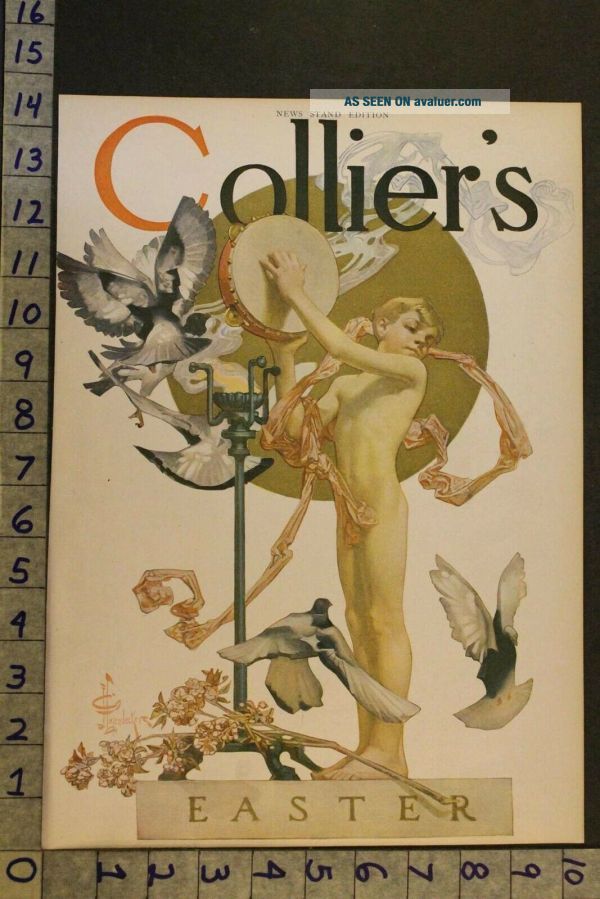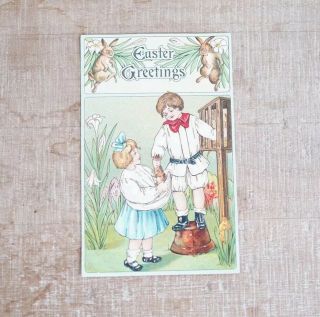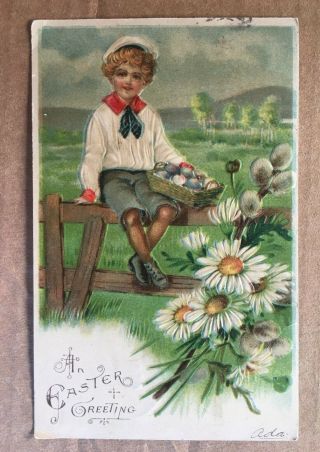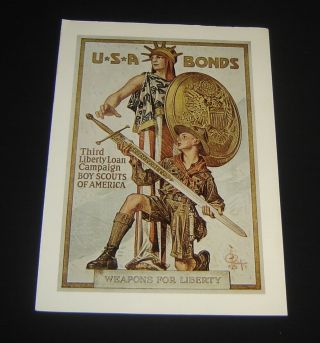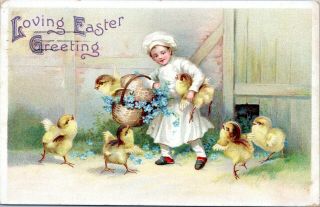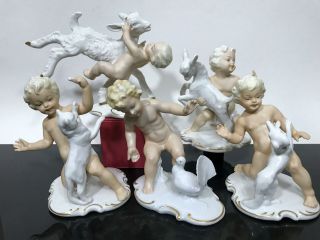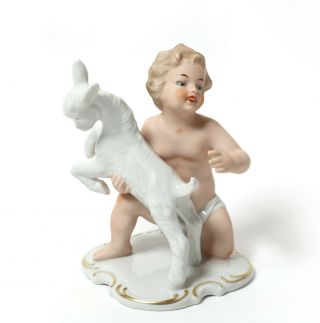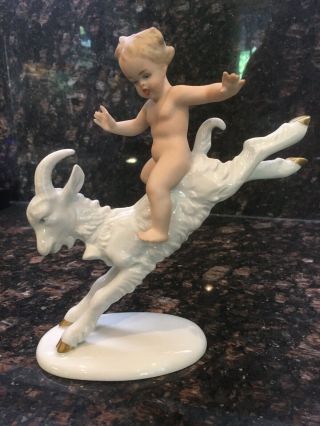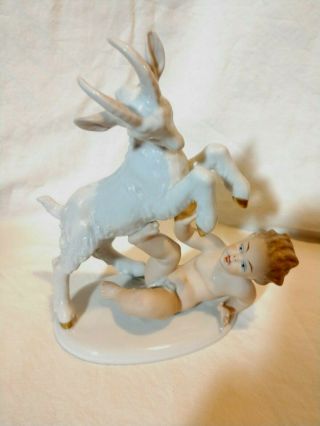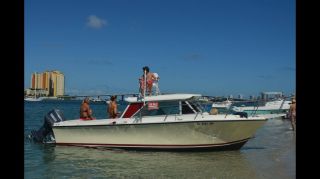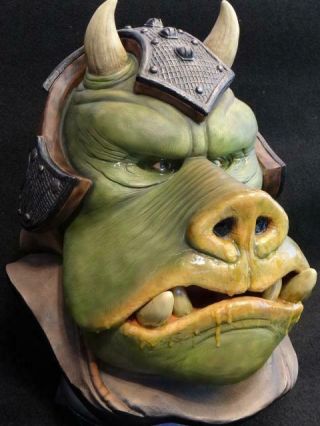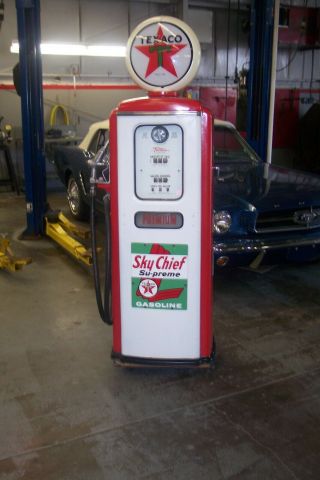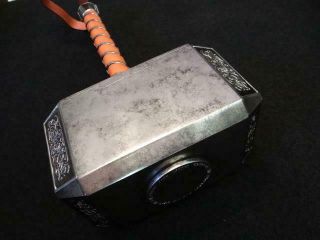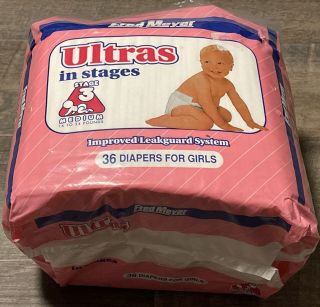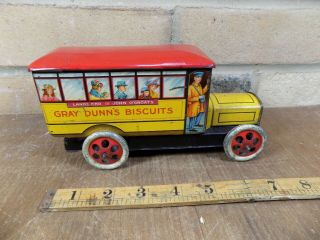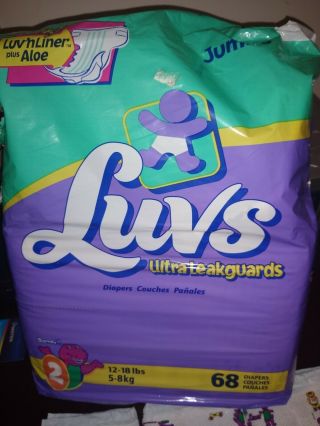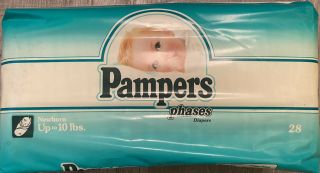1907 JC LEYENDECKER EASTER NUDE BOY TAMBORINE DOVE BIRD VINTAGE ART COVER VG02
Item History & Price
| Reference Number: Avaluer:50029487 |
DESCRIPTION OF ITEM: AN ORIGINAL ILLUSTRATED COVER (COVER ONLY) FROM VINTAGE PERIODICAL...COVER IS BEING SOLD AS-IS WITH ALL FAULTS AS SEEN IN PHOTO(S)
DATE OF ORIGINAL COVER: SEE TITLE
SPECIAL CHARACTERISTICS/DESCRIPTIVE WORDS: ONE OF THE 3 MOST DESIRABLE ART COVERS ACCOMPLISHED BY JC LEY...ENDECKER. VERY SCARCE IN THIS CONDITION.
PIGEON MUSIC STAND,
ILLUSTRATOR/ARTIST:
Joseph Christian Leyendecker (March 23, 1874 – July 25, 1951) was a German-American illustrator. He is considered to be one of the preeminent American illustrators of the early 20th century. He is best known for his poster, book and advertising illustrations, the trade character known as The Arrow Collar Man, and his numerous covers for The Saturday Evening Post.[1][2] Between 1896 and 1950, Leyendecker painted more than 400 magazine covers. During the Golden Age of American Illustration, for The Saturday Evening Post alone, J. C. Leyendecker produced 322 covers, as well as many advertisement illustrations for its interior pages. No other artist, until the arrival of Norman Rockwell two decades later, was so solidly identified with one publication.[3] Leyendecker "virtually invented the whole idea of modern magazine design."[4]
Early life[edit] Joseph Christian Leyendecker ('J.C.' or 'Joe') was born on March 23, 1874, at Montabaur in western Germany, a tiny village 18km east of the Rhine, to Peter Leyendecker (1838–1916) and Elizabeth Ortseifen Leyendecker (1845–1905). Joseph was the first-born son, and his brother Francis Xavier was born three years later. A sister, Mary Augusta, the third and last child, arrived after the family emigrated to America.[5]In 1882, the Leyendecker family immigrated to Chicago, Illinois, where Elizabeth's brother Adam Ortseifen was Vice president of the successful McAvoy Brewing Company. After working in late adolescence for a Chicago engraving firm, J. Manz & Company, and completing his first commercial commission of 60 Bible illustrations for the Powers Brothers Company, J. C. sought formal artistic training at the school of the Chicago Art Institute.[6]In 1895 the April-September issue of Inland Printer had an introduction to J.C. Leyendecker. The article described his work for J. Manz & Company as well as his intention to study in Paris. The article also featured a sketch and two book covers he had illustrated. The book covers were provided courtesy of E.A. Weeks. E.A. Weeks was a Chicago Publisher between 1893 and 1899.[1] In this same year, J.C. Leyendecker created his first poster. It was also for E.A. Weeks. The poster was for the book One Fair Daughter by Frank Frankfort Moore. [2]After studying drawing and anatomy under John H. Vanderpoel at the Chicago Art Institute, J. C. and younger brother Frank enrolled in the Académie Julian[7] in Paris for a year, where they were exposed to the work of Toulouse-Lautrec, Jules Chéret, and also Alphonse Mucha, a leader in the French Art Nouveau movement.[8][9]Career[edit]In 1899, the Leyendecker brothers returned to America and set up residence in an apartment in Hyde Park, Illinois. They had a studio in Chicago's Fine Arts Building at 410 South Michigan Ave. On May 20 of that year, Joe received his first commission for a Saturday Evening Post cover – the beginning of his forty-four-year association with the most popular magazine in the country. Ultimately he would produce 322 covers for the magazine, introducing many iconic visual images and traditions including the New Year's Baby, the pudgy red-garbed rendition of Santa Claus, flowers for Mother's Day, and firecrackers on the 4th of July.[10]In 1900, Joe, Frank, and their sister Mary moved to New York City, then the center of the US commercial art, advertising and publishing industries. During the next decade, both brothers began lucrative long-term working relationships with apparel manufactures including Interwoven Socks, Hartmarx, B. Kuppenheimer & Co., and Cluett Peabody & Company. The latter resulted in Leyendecker's most important commission when he was hired to develop a series of images of the Arrow brand of shirt collars. Leyendecker's Arrow Collar Man, as well as the images he later created for Kuppenheimer Suits and Interwoven Socks, came to define the fashionable American male during the early decades of the twentieth century.[3] Leyendecker often used his favorite model and partner Charles Beach (1881–1954).[11][12][13]Another important commission for Leyendecker was from Kellogg's, the breakfast food manufacturer. As part of a major advertising campaign, he created a series of twenty "Kellogg's Kids" to promote Kellogg's Corn Flakes.[14]In 1914, the Leyendeckers, accompanied by Charles Beach, moved into a large home and art studio in New Rochelle, New York, where J. C. would reside for the remainder of his life.[15] During the first World War, in addition to his many commissions for magazine covers and men's fashion advertisements, J. C. also painted recruitment posters for the United States military and the war effort.The 1920s were in many ways the apex of Leyendecker's career, with some of his most recognizable work being completed during this time. Modern advertising had come into its own, with Leyendecker widely regarded as among the preeminent American commercial artists. This popularity extended beyond the commercial, and into Leyendecker's personal life, where he and Charles Beach hosted large galas attended by people of consequence from all sectors. The parties they hosted at their New Rochelle home/studio were important social and celebrity making events.[16]As the 1920s marked the apex of J. C. Leyendecker's career, so the 1930s marked the beginning of its decline. Around 1930–31, Cluett, Peabody, & Co. ceased using Leyendecker's illustrations in its advertisements for shirts and ties as the collar industry seriously declined after 1921. During this time, the always shy Leyendecker became more and more reclusive, rarely speaking with people outside of his sister Mary Augusta and Charles (Frank had died in 1924 as a result of an addiction-riddled lifestyle). Perhaps in reaction to his pervasive popularity in the previous decade, or as a result of the new economic reality following the Wall Street Crash of 1929, the number of commissions Leyendecker received steadily declined. In 1936, the editor at the Saturday Evening Post for all of Leyendecker's career up to that point, George Horace Lorimer, retired, and was replaced by Wesley Winans Stout (1937–1942) and then Ben Hibbs (1942–1962), both of whom rarely commissioned Leyendecker to illustrate covers.[17]Leyendecker's last cover for the Saturday Evening Post was of a New Year Baby for January 2, 1943, thus ending the artist's most lucrative and celebrated string of commissions. New commissions continued to filter in, but slowly. Among the most prominent were posters for the United States Department of War, in which Leyendecker depicted commanding officers of the armed forces encouraging the purchases of bonds to support the nation's efforts in World War II.Leyendecker died on July 25, 1951, at his estate in New Rochelle of an acute coronary occlusion.[17]Personal life[edit]Many biographers have speculated on J. C. Leyendecker's sexuality, often attributing the apparent homoerotic aesthetic of his work to a homosexual identity. Without question, Leyendecker excelled at depicting male homosocial spaces (locker rooms, clubhouses, tailoring shops) and extraordinarily handsome young men in curious poses or exchanging glances. Leyendecker never married, and he lived with another man, Charles Beach, for much of his adult life. Beach was the original model for the famous Arrow Collar Man and is assumed to have been his lover. [18]While Beach often organized the famous gala-like social gatherings that Leyendecker was known for in the 1920s, he apparently also contributed largely to Leyendecker's social isolation in his later years. Beach reportedly forbade outside contact with the artist in the last months of his life.[19]Due to his fame as an illustrator, Leyendecker was able to indulge in a very luxurious lifestyle which in many ways embodied the decadence of the Roaring Twenties. However, when commissions began to wane in the 1930s, he was forced to curtail spending considerably. By the time of his death, Leyendecker had let all of the household staff at his New Rochelle estate go, with he and Beach attempting to maintain the extensive estate themselves. Leyendecker left a tidy estate equally split between his sister and Beach.Leyendecker is buried alongside parents and brother Frank at Woodlawn Cemetery in The Bronx, New York City.[20] Charles Allwood Beach died of a heart attack on 21 June 1954 at New Rochelle.[21] The exact location of his burial is unknown. Although the register for St. Paul's Church, New Rochelle, indicates internment at Ferncliff Cemetery in Hartsdale, New York, the cemetery has no record of the burial.[22][23]
IMAGE SIZE: SEE PHOTO FOR DIMENSIONS ( ALL DIMENSIONS IN INCHES) Item Condition: SEE PHOTO CAREFULLY...All original ads have some sign of age use.. these are period ads and we take quality photo's to show any flaws. If you have questions about condition please ask... We do not reveal the periodical from which the ad is removed ... except to the buyer ! Please don't ask us email this info... or higher res. photo's.... For those folks who wish to copy and print our photo's be aware they are photo copyrighted. and we will report misuse ! We DO try and note and MAJOR flaws....otherwise please use the photo as part of the description...
**For multiple purchases please wait for our combined invoice. Shipping discount are ONLY available with this method. Thank You.
At BRANCHWATER BOOKS we look for rare & unusual ADVERTISING, COVERS + PRINTS of commercial graphics from throughout the world. THE COLLECTING OF MAGAZINE COVER ART IS INTRIGUING IN THE SENSE OF "THE FIND" AND ALSO "THE BRAG" ... BEING IN EVERY SENSE OF THE WORD-EPHEMERAL, MOST MAGAZINES WERE NOT INTENDED FOR LONG-TERM SURVIVAL. STARTING WITH THE FIRST MAGAZINE (IE: THE GENTLEMAN'S MAGAZINE, FIRST PUBLISHED IN 1731, IN LONDON, CONSIDERED TO HAVE BEEN THE FIRST GENERAL INTEREST MAGAZINE). MOST WERE READ, AND RE-READ AS THEY WERE PASSED ALONG BUT EVENTUALLY MOST WOULD END UP IN THE TRASH OR THE SCRAP PAPER-BUYER'S CART...AND SO THE ENJOYMENT OF COLLECTING MAGAZINES AND THEIR SUPERLATIVE COVER ART BEGAN.
WARS, HATE MONGERS, BOOK BINDERS, SCRAP DRIVES, RODENTS, MOLD AND FIRE, HAVE TAKEN THEIR TOLL UPON SURVIVAL...ALONG WITH FLOODS, TORNADOS, AND OTHER NATURAL DISASTERS WHICH CONTINUALLY REDUCE THE AVAILABLE NUMBER OF COLLECTIBLE COVERS TO ENJOY, PURCHASE, AND SHOW OFF.
AS WITH ALL EPHEMERA, CONDITION, SCARCITY, CONDITION, DESIRABILITY, CONDITION, AND ... DID I MENTION...CONDITION...ARE THE PRIME FACTORS INVOLVED IN PRICE.
PERFECT COVER ART IS RARE---AND PRICED ACCORDINGLY!
MOST COVERS PRIOR TO 1880 WERE PRINTED ON ACID FREE PAPER...AFTER THAT PAPER QUALITY CONTINUES TO DECLINE.
IT IS ALWAYS BEST TO USE ACID-FREE STORAGE IN MOUNTING PRACTICES IN COLLECTING MAGAZINE COVERS
AS DECORATIVE ART, THESE COVERS GIVE YOU, THE BUYER, AN OPPORTUNITY TO PURCHASE AND ENJOY FINE GRAPHICS.
As graphic collectors ourselves, we take great pride in doing the best job we can to preserve and extend the wonderful historic graphics of the past.PLEASE LOOK AT OUR PHOTO CLOSELY AS IT IS (ALBEIT LOWER RESOLUTION) THE PRODUCT BEING SOLD.....NOT STOCK IMAGES
**NOTE** : PAGES MAY SHOW AGE WEAR AND IMPERFECTIONS TO MARGINS, WITH CLOSED NICKS AND CUTS, WHICH DO NOT AFFECT AD IMAGE OR TEXT WHEN MATTED AND FRAMED.We ship via United States Postal Service. We have a 4 day handling time not including weekends or holidays but normally we have all orders processed, packed and shipped within 48 hrs.
A Note to our international buyers (Including Canada). Please read before placing a bid or buying an item:**Import taxes, duties and charges are not included in the item price or shipping charges. These charges are the buyer's responsibility. Please check with your country's customs office to determine what these additional costs will be prior to bidding/buying on items. These charges are normally collected by the shipping company or when you pick the item up, this is not an additional shipping charge. We do not mark merchandise values below value or mark items as GIFTS, US and International government laws prohibit this so please don't ask us to. We are not responsible for shipping times to international buyer's. Your country's customs may hold the package for a month or more.
We ask that payments be made within 2 days or notify us via email otherwise. We send out a reminder payment email once and then proceed with unpaid item report on the 4 th day.**We pride ourselves on quality products, great service, accurate gradations and fast shipping.**BRANCHWATER BOOKS GRADING SCALE:GOOD-->VERY GOOD-->FINE
YOUR AD WILL BE SHIPPED ROLLED IN A PROTECTIVE PLASTIC BAG IN AN 80mm (TWICE USPS RECOMMENDED) THICK, 2 INCHES IN DIAMETER (SO AS NOT TO STRESS THE PAPER) SHIPPING TUBE WITH PRESS TIGHT PLASTIC END CAPS.
VG02
Powered by SixBit's eCommerce Solution



